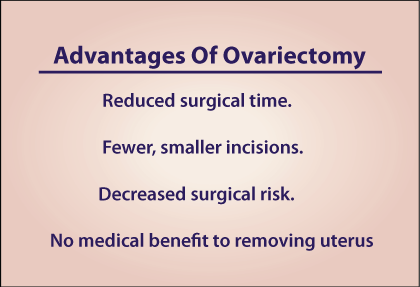An even less painful and safer alternative
The excellent visibility and magnification provided by laparoscopic techniques not only reduces risks that nearby organs will be damaged during surgery, but also allows for increased confidence that all ovarian tissue is effectively removed. This is important because remnants of ovarian tissue may continue to cause heat cycles. These cycles may be silent, but can allow the remaining portion of the uterus to become infected (called a stump pyometra). This can lead to illness and repeat surgery often late in life. It has long been thought that stump pyometra were the result of the surgeon leaving too much uterus at the time of spaying, but it is now clear that this condition does not occur unless active ovarian tissue remains in the body or the pet has gone through multiple heat cycles before being spayed and the conditions for infection have already been set up.
Since laparoscopy allows for reliable removal of the ovaries, we can now recommend performing ovariectomy, or simply removing the ovaries and leaving the uterus in place, especially in young animals that have not yet experienced a heat cycle. This procedure is much simpler, requiring less time and fewer incisions when compared to a full laparoscopic spay.
If you would like more information about ovariectomy and other minimally invasive procedures, or would like to schedule an appointment, please contact your veterinarian or Dr. Keith Gunby at Veterinary Laparoscopic Services.

